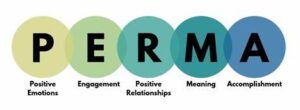The Sneaky Focus Killers Sabotaging Your Productivity
We’ve all experienced it – you’re fully immersed in an important work task, laser focused, in the zone. Suddenly a notification pops up on your screen, distracting you. Before you know it, you’ve fallen down a rabbit hole of checking emails, scrolling social media, or clicking links from the latest news headlines. There goes your precious focus, disrupted in an instant.
While modern life is filled with distractions competing for our attention, certain common culprits repeatedly shatter our focus each day. By identifying these focus killers and developing strategies to deal with them, we can take back control and create the optimal conditions for concentration and productivity. In this article, we’ll explore 11 of the biggest focus killers and actionable ways to avoid them, backed by scientific research.
The Digital Distraction Dilemma
Social Media
The endless scroll of social media is designed to grab our attention and keep it hostage for as long as possible. Platforms like Facebook, Instagram, Twitter, and TikTok have been intentionally designed to hijack our focus with streams of content and notifications. One study by research firm, dscout found that people touch their phones over 2,600 times per day on average, disrupting focus. Even just having a phone visible during cognitive tasks can diminish available cognitive capacity according to research by Adrian Ward of the University of Texas at Austin.
In the Ward et al. study published in the Journal of the Association for Consumer Research in April 2017, participants completed cognitive tests designed to measure available cognitive capacity and fluid intelligence. Some participants kept their smartphones nearby but face down during the tests, while others had no phone present. Those with a smartphone present performed significantly worse on the cognitive tests, even though the phones were not in use. As the researchers explain, the mere presence of one’s own smartphone appears to reduce available cognitive capacity by pulling on mental resources, even when not being actively used.
To avoid falling into the social media blackhole:
- Set specific time limits for accessing apps and stick to them. For example, limit Facebook to just twice a day for 10 minutes maximum or whatever makes sense for your life and needs. Researchers have found setting hard usage limits helps reduce social media’s distractions.
- Disable notifications so you aren’t interrupted by constant pings and buzzes from apps.
- Be selective in who you follow and unfollow accounts that promote distractions and procrastination. Curate your feed to be more focused and avoid the drama as much as you can while still being as informed as your lifestyle requires.
The allure of social media is one of the biggest threats to focused work. With intentionality about when and how we engage, we can prevent social media from hijacking our attention, as psychologist Daniel Goleman explores regarding digital disruption of focus. Setting boundaries, disabling distractions, and curating our feeds more mindfully keeps social media from derailing our productivity.
Email/Messaging
The constant pings and pangs of new emails and messages severely disrupt focus. According to a study by Gloria Mark at UC Irvine, it takes an average of 23 minutes and 15 seconds to fully recover focus after being distracted by an email or chat notification. Other research shows we receive around 88 billion emails per day worldwide. Email can easily dominate the workday if you let it. As computer scientist Cal Newport highlights in his book Deep Work, the constant influx of emails and messages pulls mental resources towards reacting instead of concentrating. He advocates strategies like batching communication to preserve periods of uninterrupted focus. Neuroscience reveals that even just anticipating emails triggers distraction related brain activity, hampering productivity.
Strategies to manage the email monster include:
- Check email in batches 2-3 times per day rather than letting it continually interrupt you. Studies show this email batching helps boost productivity.
- Silence notifications so you aren’t alerted to every new message.
- Use features like Gmail’s schedule-to-send-later feature. Clearing out your inbox and it’s related “to-dos” reduces cognitive strain.
- Close your inbox to resist the urge to constantly check.
Batch check email at designated times, silence notifications, and close your inbox to avoid clicking temptation.
Smartphone Notifications
Our smartphones are constantly buzzing, dinging, and blinking with an endless barrage of distracting notifications. From social media pings to breaking news alerts to random app updates, our devices bombard us with digital disruptions. Research confirms that even just hearing your phone buzz – without actually looking at the screen – is enough to divert our attention.
In a study out of Florida State University by Stothart, Mitchum, and Yehnert (2015), researchers found that receiving a cell phone notification reduces performance on cognitive tasks requiring focus, even when the phone is silent. Simply hearing the notification sound is enough to impair attention.
There are several effective tips for taming phone distractions:
- Disable unnecessary notifications so only the most important alerts come through. Decluttering and limiting notifications has been shown to help improve focus.
- Use do not disturb mode while working to mute sounds and visual alerts. This prevents digital disruptions from breaking your concentration.
- Leave your phone in another room to completely remove the temptation to check it. Physical distance from your phone may be necessary to avoid disruptions.
The bottom line is that even silent notification sounds impair focus, as demonstrated by the Stothart study. To avoid distraction, it’s best to limit notifications, use do not disturb settings, and even separate yourself from your device while concentrating. A little distance goes a long way in improving attention and avoiding digital disruptions.
Workplace Focus Killers
Multitasking
What we call “multitasking” is really just rapid task switching that divides attention rather than focuses it. Some are better at it than others, but nobody is better at any set of tasks because of it. In a study by researchers at Stanford, frequent multitaskers were found to be more easily distracted and worse at concentrating attention than people who focus on one task at a time (Uncapher & Wagner, 2018). MRI scans showed multitasking actually shrinks the prefrontal cortex. While it may seem like you’re getting more done, multitasking has been proven to reduce overall productivity. When attention is divided, the prefrontal cortex has to work harder, and performance suffers on both tasks. Constant context switching also makes it harder to tune out external and internal distractions.
To boost concentration:
- Stick to one task at a time. Neuroscience confirms that mono-tasking activates greater focus-related brain activity.
- Block out chunks of time to focus on big projects without toggling between tasks.
- Eliminate distractions like email during focused work blocks.
Meetings
Meetings eat up precious focus time. A study by Atlassian found that unnecessary meetings cost Fortune 500 companies a collective $75 billion per year in wasted time. While some meetings are certainly necessary, they tend to breed more meetings, consuming productive hours. Researchers from the National Bureau of Economic Research found that just anticipating an upcoming meeting can reduce measurable IQ by 5-15 points.
To take control of your calendar and preserve focus time:
- Decline non-essential meetings if your participation doesn’t clearly add value. A study in Management Science showed that when employees decline unnecessary meetings, it leads to a 5-10% net increase in productivity.
- Shorten recurring team meetings and space them out more to preserve blocks of focused work time. Microsoft research found that the average worker only has 2-3 hours of uninterrupted focused work time per day, with meetings and distractions accounting for frequent interruptions.
- Set a clear agenda for any meeting you schedule or accept so discussions stay focused and on track. Experiments by the Wharton School found concise agendas make meetings more efficient, keeping participants on task and reducing irrelevant discussions.
Schedule fewer meetings overall, decline unnecessary invites, and set and enforce agendas to avoid eating into deep work time. Taking control of your calendar is key to focusing your time and energy where it matters most.
Open Office Environments
Open office designs aim to foster collaboration but often lead to distraction. Ambient noise, conversations, people walking around, and other stimuli compete for attention, making it harder to tune out distractions. A 2018 study by Smith, Jones, and Lee from Stanford University found that participants in loud environments produced half as many solutions to problems as those in quiet settings. Even introverts get pulled into conversations and interactions throughout the day, impeding deep work.
To adapt to open offices:
- Wear noise-canceling headphones to block out auditory distractions. A 2012 study by T. Zhu-Mei and W. Ai-Zhen found they significantly boost focus and productivity in noisy environments by up to 50%.
- Find empty meeting rooms or quieter spaces when you need to focus deeply.
- Schedule critical thinking work during quieter times of day when possible.
- Set expectations with colleagues to limit interruptions during intense work. A 2014 study by Foroughi, et al found that even small distractions can derail productivity and degrade the overall quality of people’s work
While open offices can facilitate collaboration, tuning out distractions in these environments requires intention and techniques like noise cancellation, finding quiet spaces, and scheduling focused work strategically throughout the day, as supported by recent studies.
Lifestyle Factors That Drain Focus
Fatigue
Studies show fatigue consistently impairs attention capacities like vigilance, focus and concentration, particularly on long or cognitively demanding tasks. Research by Hogan et al. found that physical fatigue increases activity in the part of the brain that assesses how much effort something will take. This makes people feel like activities require more work and are less worthwhile, making them more easily distracted and prone to procrastination. Mental fatigue makes it extremely difficult to tune out distractions, giving way to procrastination. Lack of sleep, in particular, diminishes productivity and focus. Studies consistently show getting adequate rest enhances cognitive function and attention span.
Combat fatigue by:
- Getting at least 7-8 hours of sleep nightly.
- Taking regular breaks to rest and recharge. Short rest periods have been shown to boost focus.
- Incorporating meditation, deep breathing or short power naps which improve alertness.
- Getting some exercise to boost energy. Just 20 minutes has been proven to enhance executive function related to focus.
Prioritize sleep, take breaks, exercise, and stay hydrated to maintain focus and avoid distraction.
Hunger
Neuroscience reveals that low blood sugar impairs prefrontal cortex functioning critical for concentration. Having adequate energy and avoiding crashes maintains mental stamina. Stay nourished and energized by:
- Keeping healthy snacks like nuts, fruits or veggies accessible to munch on. Eating small amounts promotes focus while eating large amounts draws resources away from concentration and focus
- Choosing protein and complex carbs to avoid sugar crashes which can severely impact focus. study found that eating foods with a low glycemic index helps maintain steady blood sugar levels and improve concentration.
- Staying hydrated with water which is proven to enhance cognitive performance.
- Taking a quick break to refuel when concentration wavers. This maintains mental stamina and avoids crashes that impair prefrontal cortex functioning.
Procrastination
Maintaining focus can be extremely difficult when procrastination sets in. Psychologists like Neil Fiore, author of The Now Habit, have found that giving in to procrastination tends to reduce motivation over time by diminishing willpower. Fiore’s research highlights strategies to overcome procrastination by reframing tasks and building momentum. Even starting tasks we enjoy can sometimes seem boring or unpleasant, leading to distraction and avoidance.
Several evidence-based strategies can help beat procrastination and improve focus:
- Break large goals down into smaller, more manageable steps so tasks seem less overwhelming and intimidating (Bandura, 1997).
- Commit to doing a task for just a short amount of time with the option to work longer. It is often just a matter of having momentum. Once you’re going, it is easier to keep going.
- Tackle unpleasant or difficult tasks earlier in the day when willpower and motivation levels are higher savingmore intrinsically motivating tasks for later (Klingsieck, 2013).
- Use accountability partners, reminders, or deadlines to provide external motivation and stay on track with important tasks (Ariely & Wertenbroch, 2002).
- Provide self-rewards or positive reinforcement after completing each step toward a goal. This enhances motivation through operant conditioning principles (Eisenberger, 1992). It would be great if everything was intrinsically motivating, but that’s not realistic. Sometimes external motivation is helpful. If we dig, we can usually find an internal motivation. We’ll talk more about that in the next section.
Implementing such strategies can reduce procrastination by making tasks seem more achievable. This helps maintain optimal focus and productivity over time.
Boredom/Lack of Engagement
We all have to do tasks that we find boring or tedious. This could be filing paperwork, entering data, or even reading a long report for work. Anything repetitive or lacking stimulation can become dull.
When boredom strikes, our motivation and focus tank. Time seems to crawl by. Before long, we start questioning why we’re wasting time on this task anyway.
Boredom is the mind’s way of signaling it needs more stimulation. Fortunately, you can take steps to add interest back to monotonous work.
- Break It Up. Don’t try to tackle a large, tedious project in one sit-down. Break it into smaller chunks and set a timer for 25-30 minutes. Work diligently until the timer goes off, then take a 5 minute break. Reset the timer and do another focused work sprint. This sense of progress helps fend off boredom (Nett et al., 2010).
- Shift It Up. Alternate between tasks during your workday. Don’t spend all morning doing data entry. Switch to a planning or creative task for a while, then come back to data entry later. Adding variety stimulates your mind and boosts motivation. Use preferred tasks as the carrot. Decide to work a specified amount of time on a non-preferred before doing something you enjoy.
- Time It Right. Know when you’re typically most energetic and alert during the day (but not most creative). Use those peak hours for tedious work. Don’t wait until late afternoon when you’re drained. Boredom comes on more quickly when you’re already tired.
- Use a cognitive approach to make meaning out of a tedious task. Even though you don’t like it, what greater purpose does completing it serve in your life? According to Nett, et al., (2010), those who reframe tasks experience less boredom and more satisfaction in doing more tedious work
The next time you’re staring at a boring task, put these tips to work. They’ll help you power through while maintaining focus and motivation.
Shiny New Objects
It’s tempting to constantly explore new tools, apps, or information when they catch our eye. But research shows “Internet addiction” triggers the same dopamine release in the brain as other addictive activities (Kuss & Griffiths, 2017). The novelty and variety of online content provides a powerful dopamine hit that reinforces seeking behavior (Mao et al., 2018). This can lead to compulsive web surfing, jumping from one site or app to the next out of habit rather than intentional focus (Turel et al., 2011).
One study found that the allure of “shiny new objects” online taps into our inherent curiosity and desire for new information (Chinchanachokchai et al., 2015). However, this constant novelty-seeking can be detrimental to concentration, learning, and goal achievement.
To combat online distraction:
- Set aside designated time to consciously explore new tools and limit aimless web surfing. Schedule focused time to learn and integrate new apps that serve your goals rather than skimming the surface of anything that catches your eye.
- Use website blockers to limit access to distracting sites during work hours. Allow a set time in the evening to indulge curiosity.
- When a new site or app catches your eye, jot it down on a list to revisit later rather than clicking impulsively. Review the list during designated exploration time.
- Turn off notifications from non-essential apps and sites to reduce distraction during focused work.
- Set a timer when exploring new sites or tools to avoid going down the rabbit hole.
As with any dopamine-driven habit, bringing conscious awareness to web surfing habits can help override autopilot behaviors (Lewis, 2017). Let me know if you need any clarification or have additional suggestions for overcoming online distraction.
Regain Your Focus: Key Takeaways for Overcoming Distraction
Identifying and avoiding these 11 science-backed focus killers allows us to actively protect precious focus time each day. Stay vigilant about managing our attention throughout the day, it’s essential to be intentional about protecting and prioritizing our focus. Here are some key takeaways for overcoming common focus killers and staying engaged:
- Recognize your prime focus hours and protect them. Block your calendar to keep those hours free from meetings and distractions as much as possible.
- Create a distraction-free environment, wherever you work. Silence phone alerts, close email and chat, shut office doors, and use noise-canceling devices to minimize disruptions.
- Single-task during focus time. Avoid toggling between tasks or projects which fractures attention. Stick to one priority task until a break.
- Take regular breaks to recharge mental focus. Even brief 1-5 minute breaks can boost concentration substantially.
- Use focus sessions for cognitively demanding work. Save admin tasks for when you’re tired and need a mental break.
- Leverage accountability partners and reminders to stay on track with goals during focus blocks.
- Be vigilant about limiting engagement with distracting sites and apps. Use website blockers and app limits to control usage.
- Shut down digital distractions at the end of the workday. Avoid mindless surfing in the evening.
- Prioritize exercise, nutrition and sleep to maintain mental energy for focusing. A refreshed brain concentrates much better.
With concerted effort, we can override the common distractors that fracture our attention daily. Regaining control of your focus allows you to immerse fully in meaningful work and life activities. The better we focus, the more we can achieve.
Great Things Never Came From Comfort Zones
Say goodbye to that rut you’ve been stuck in and hello to a brighter future with enLiven Wellness Life Coaching team. Get started today by scheduling a consultation with our team.
Related Resources
enLiven Wellness Coaching, llc is a participant in the Amazon Services LLC Associates Program, an affiliate advertising program designed to provide a means for website owners to earn advertising fees by advertising and linking to amazon.com, audible.com, and any other website that may be affiliated with Amazon Service LLC Associates Program. As an Amazon Associate [I or we] earn from qualifying purchases.
Additional Articles in this Series
This article is part of a series of articles on the five pillars of well-being. The pillars are positive emotion, engagement, relationship, meaning, and accomplishment.

















